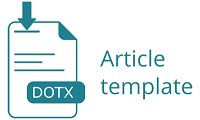Effectiveness Bale Educational Merariq Kodeq (Bedeq) Assistance to Pre-Pregnancy Readiness In Early Married Couples as an Effort to Prevent Stunting
Abstract
Pregnancy due to merariq kodeq or getting married at an early age can be risky because, at that age, teenagers are relatively unable to accept physical and psychological changes. Efforts that can be made for couples who marry at an early age to prepare for a healthy pregnancy are through mentoring. The aim of this research is to analyze the effectiveness of Merariq Kodeq (Bedeq) Education Bale Assistance on Pre-Pregnancy Readiness. This type of research is Quasi-Experimental research with a Post-Test only with Control Group Design approach with a total sampling technique of 60 people divided into two groups, namely the BEDEQ assistance intervention group and the Catin service counseling control group with 30 people in each group. The results of the study showed that there was a significant difference between the intervention group and the control group, with a p value of 0.008 (p value 0.05). Most of the respondents had good knowledge after receiving the Bedeq intervention assistance treatment for prospective brides and grooms, 18 respondents (81.8%) and married couples, 7 people (87.5%). Meanwhile, in the control group, the level of knowledge about healthy pre-pregnancy among prospective brides and grooms was 10 people (45.5%) had good knowledge, 9 people (40.9%) had sufficient knowledge, and 3 people (13.6%) had poor knowledge. With BEDEQ assistance, the community, especially teenage brides and grooms, can pay more attention to their physical and psychological conditions in preparing for a healthy pre-pregnancy to prevent the risk of stunting
Keywords
References
Affairs, D. of E. and S., & Dynamics, P. (2019). World Population Prospects.
Arisjulyanto, D. (2019). Intensity Of Social Media Use With Premarital Sexual Behavior Of Adolescents In Smk 2 Gerung West Lombok. Universitas Gadjah Mada.
Fitriahadi, E. (2018). Hubungan tinggi badan ibu dengan kejadian stunting pada balita usia 24-59 bulan The relationship between mother’s height with stunting incidence in children aged 24-59 months. Jurnal Keperawatan Dan Kebidanan Aisyiyah ISSN, 14(1), 15–24.
Geneva, Organization, W. H. (2017). Global Accelerated Action for the Health of Adolescents (AA-HA!): guidance to support country implementation.
I’anah, N. (2018). A child carrying a child: potrait of a teenager’s life after early marriage due to pregnancy in Ungaran, Semarang Central Java (pp. 63–77).
Maheshwari, M. V, Khalid, N., Patel, P. D., Alghareeb, R., & Hussain, A. (2022). Maternal and Neonatal Outcomes of Adolescent Pregnancy: A Narrative Review. Cureus, 14(6). https://doi.org/10.7759/cureus.25921
Munakampe, M. N., Fwemba, I., Zulu, J. M., & Michelo, C. (2021). Association between socioeconomic status and fertility among adolescents aged 15 to 19: an analysis of the 2013/2014 Zambia Demographic Health Survey (ZDHS). Reproductive Health, 18(1), 1–11.
Nursalam. (2016). Metodologi Penelitian Ilmu Keperawatan: Pendekatan Praktis. Salemba Medika.
Permatasari, C. (2022). Pernikahan Usia Dini dan Risiko Terhadap Kejadian Stunting pada Baduta di Puskesmas Kertek 2, Kabupaten Wonosobo. HIGEIA (Journal of Public Health Research and Development), 6(1).
Pratama, A., & Salat, M. (2021). Peranan Forum Koordinasi Gerakan Anti Merarik Kodeq (GAMAQ) Menurut Peraturan Daerah No. 9 Tahun 2019. Private Law, 1(3), 455–461.
Putri, G. N., Winarni, S., & Dharmawan, Y. (2017). Gambaran Umur Wus Muda Dan Faktor Risiko Kehamilan Terhadap Komplikasi Persalinan Atau Nifas Di Kecamatan Bandungan Kabupaten Semarang. Jurnal Kesehatan Masyarakat (Undip), 5(1), 150–157.
Quenby, S., Gallos, I. D., Dhillon-Smith, R. K., Podesek, M., Stephenson, M. D., Fisher, J., Brosens, J. J., Brewin, J., Ramhorst, R., & Lucas, E. S. (2021). Miscarriage matters: the epidemiological, physical, psychological, and economic costs of early pregnancy loss. The Lancet, 397(10285), 1658–1667.
Riskesdas, L. N. (2018). Kementerian Kesehatan RI Badan Penelitian dan Pengembangan Kesehatan. Jakarta.
Sentell, T., da Câmara, S. M. A., Ylli, A., Velez, M. P., Domingues, M. R., Bassani, D. G., Guo, M., & Pirkle, C. M. (2019). Data gaps in adolescent fertility surveillance in middle-income countries in Latin America and South Eastern Europe: Barriers to evidence-based health promotion. South Eastern European Journal of Public Health, 11.
Sriyatin, A. P. P., & Yuhandini, D. S. (2022). Upaya Meningkatkan Pengetahuan Orang Tua Siswa/Siswi Tentang Bahaya Pernikahan Dini Di Smpn 15 Kota Cirebon. Indonesian Journal Of Community Service, 2(2), 229–234.
Statistik, B. P. (2017). Survey Sosial Ekonomi Nasional (SUSENAS) Maret 2017. Badan Pusat Statistik. Jakarta.
Syalis, E. R., & Nurwati, N. N. (2020). Analisis Dampak Pernikahan Dini Terhadap Psikologis Remaja. Focus: Jurnal Pekerjaan Sosial, 3(1), 29–39.
Vivatkusol, Y., Thavaramara, T., & Phaloprakarn, C. (2017). Inappropriate gestational weight gain among teenage pregnancies: prevalence and pregnancy outcomes. International Journal of Women’s Health, 9, 347.
(WHO), W. H. O. (2015). Core competencies in adolescent health and development for primary care providers: including a tool to assess the adolescent health and development component in pre-service education of health-care providers. World Health Organization.
(WHO), W. H. O. (2019). Trends in maternal mortality 2000 to 2017: estimates by WHO, UNICEF, UNFPA, World Bank Group and the United Nations Population Division.
Zimmerman, L. A., Li, M., Moreau, C., Wilopo, S., & Blum, R. (2019). Measuring agency as a dimension of empowerment among young adolescents globally; findings from the Global Early Adolescent Study. SSM-Population Health, 8.
Article Statistic
Abstract view : 290 timesPDF views : 182 times
Dimensions Metrics
How To Cite This :
Refbacks
- There are currently no refbacks.
Copyright (c) 2024 Jurnal Kesehatan Prima

This work is licensed under a Creative Commons Attribution-ShareAlike 4.0 International License.




